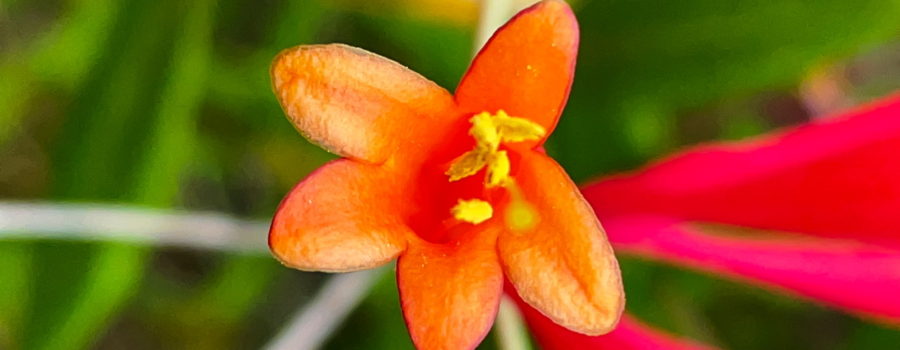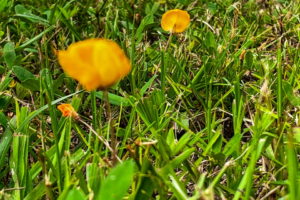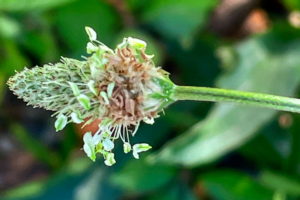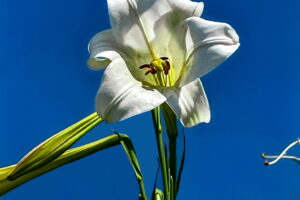Trumpet or Coral Honeysuckle is Another Beautiful Florida Native

Every year in the early spring there is a beautiful flowering vine that likes to climb on fences and sometimes up tree trunks or over other vegetation. Of course, it’s actually present all the time, but the early spring is when it’s really noticeable because that’s when it starts to bloom, and it’s gorgeous red and yellow trumpet shaped flowers are unmistakable. It tends to grow in clumps, especially in the direct sun, so it loves the fences around our cow and horse pastures in this area. What is it? It’s coral honeysuckle, also known as trumpet honeysuckle.

A lot of folks may be familiar with the honeysuckle family because of the infamous Japanese honeysuckle. Japanese honeysuckle is a nonnative plant in the United States that is often sold as an ornamental, but unfortunately, it is fast growing and aggressive, and is well known for escaping it’s garden and invading local environments, where it has been known to outcompete native species (much like mimosas). Although coral honeysuckle is in the same family as Japanese honeysuckle, it is not an invasive plant, and it is native to the east coast of the United States. Generally, coral honeysuckle can be found from southern Connecticut south into all of Florida, and west into Texas. Like Japanese honeysuckle, it is commonly used as an ornamental, and can be found being cultivated in gardens in some nonnative areas.

Why do people like honeysuckle so much? Of course the most obvious reason is the gorgeous flowers. Honeysuckle flowers are also a great attractor for hummingbirds, butterflies, and other wildlife. Even though coral honeysuckle has its biggest bloom in the early to mid spring, it will continue to produce some blossoms throughout the summer and into the early fall. During the spring and summer the plant itself also provides shelter and food to several types of butterfly and moth caterpillars. Once the flowers have passed, coral honeysuckle produces a very pretty, bright red berry. The berries also attract quite a bit of wildlife including quail, turkeys, cedar waxwings, robins, thrushes, and deer. Native Americans also used the leaves to make a tea for sore throats, coughs, and asthma and the berries to induce nausea and vomiting.

So just like our large patches of wild phlox, here in Florida we are fortunate enough to get to enjoy coral honeysuckle for free while many people have to go to the garden store and buy it. Whether you want to enjoy the handsome flowers on a trellis, draped over a fence, or growing along the roadside or you want to attract wildlife (or both), coral honeysuckle is a great plant to have around.





Recent Comments